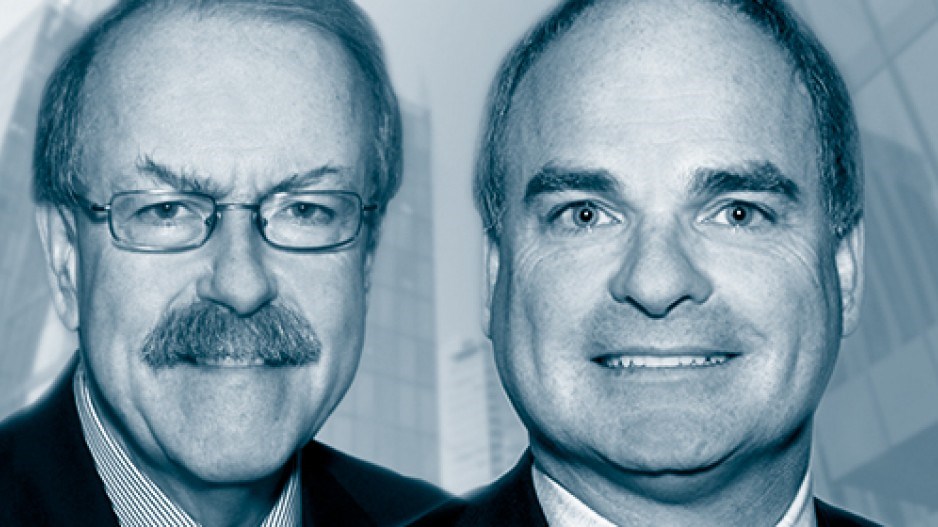While Canada seems unable to put the COVID-19 health crisis behind it, around the world economies are rebounding and the overall global outlook has improved.
The April 2021 forecast from the International Monetary Fund tells the story. After shrinking by 3.3% in 2020, the world economy is projected to expand by 6% this year, followed by a 4.4% advance in 2022. The recovery in the United States will outpace that in Canada, but even Canada should return to a solid growth track in 2021-22.
As economies gradually reopen, some forecasters and financial market participants are starting to focus on the spectre of rising inflation. A Google search reveals an explosion of media reports in the past few months on the topic of inflation.
Inflation, as measured by the all-items Consumer Price Index in Canada and similar composite indicators in other developed countries, has been quiescent for an extended period. Indeed, in the decade to 2020, central banks in the U.S., Japan and the eurozone mostly undershot their official inflation targets, even when unemployment rates were hovering near record lows and economies appeared to be running at full tilt. This was partly because of dramatic increases in global labour supply and worldwide production capacity as China and other emerging economies were integrated into international supply chains. It also reflected the deflationary effects of technological change.
In this environment, a belief took hold that inflation was yesterday’s problem. Then came the COVID shock, which triggered a further drop in inflation on the back of collapsing oil prices and declines in spending amid unprecedented social and travel restrictions.
But market sentiment began to shift in late 2020. After hitting record lows last summer, government bond yields began to march higher. By February 2021, the yields on 10-year U.S. and Canadian government bonds had roughly tripled from August 2020. To be sure, borrowing costs for credit-worthy public and private sector entities are still low in absolute terms, and forward-looking market measures do not point an inflationary spiral. But expectations have changed.
The coming months will bring higher headline inflation, because of the sudden (but temporary) plunge in energy prices and the COVID-induced economic slump last spring. Plus, with the global economy strengthening, prices for energy, industrial raw materials and foodstuffs have been climbing. There is considerable “pent-up” demand for spending among consumers who have curtailed travel and scaled back purchases of services over the last year.
With household savings in North America sitting at record-high levels, consumers collectively are well positioned to splurge once public health restrictions are relaxed. At the same time, the pandemic has disrupted and complicated trade flows and some supply chains. Supply chain hiccups, mounting protectionism and thicker national borders may translate into higher costs for some consumer products and intermediate inputs.
Then there is the impact of macroeconomic policy. National governments in the U.S. and Canada are committed to further expand significant deficit-financed fiscal stimulus, even though “output gaps” in both countries are expected to close by the end of the year and public sector balance sheets are groaning under the weight of massive new debts taken on during the pandemic. The extra government stimulus dollars will be injected into the economy just as consumers are opening their wallets and spending in interest-sensitive sectors like housing remains elevated. Finally, central banks, including the Bank of Canada and the U.S. Federal Reserve, have taken extraordinary action to support economic growth and ensure the financial system has oodles of liquidity.
Add it all up, and it is not hard to understand why worries about the prospect of escalating inflation have grown. We don’t (yet) share these concerns, although we do anticipate somewhat higher inflation over the next one to two years as economic activity picks up.
It would not be surprising to see measures of annualized inflation reach 3% in the U.S., and perhaps 2.5% in Canada, later this year. But we are not in the camp that anticipates an unravelling of the inflation control frameworks adopted by the central banks in Canada and the U.S., both of which operate with inflation targets in the vicinity of 2%. We believe independent central banks will boost interest rates and take steps to remove excess liquidity from the financial system when overall economic conditions warrant such action. In Canada, more than 25 years of successful management of inflation by the central bank give us confidence that the risk of runway inflation is very small. •
Jock Finlayson is the Business Council of British Columbia’s senior policy adviser; Ken Peacock is the council’s senior vice-president and chief economist.




